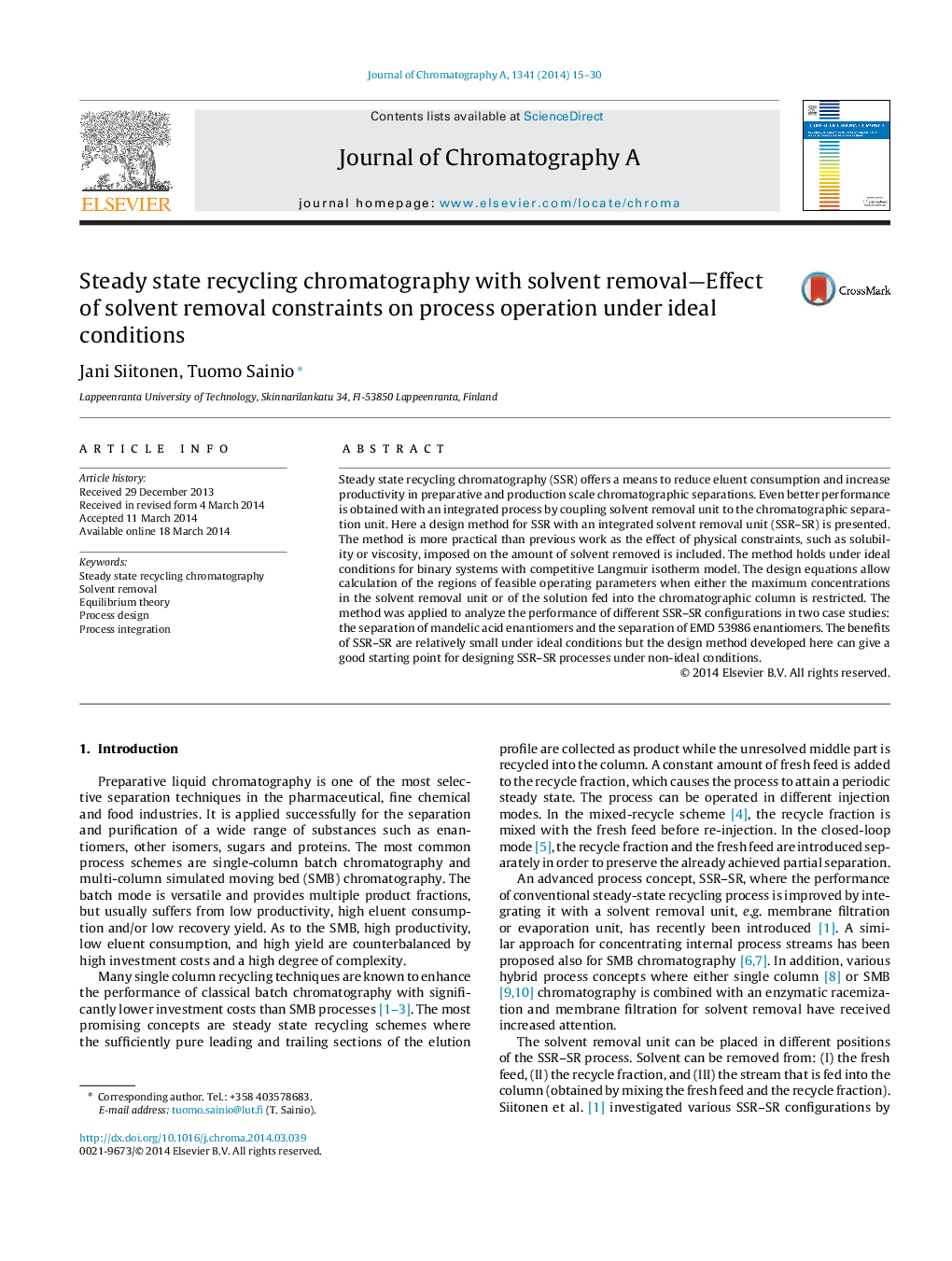| Article ID | Journal | Published Year | Pages | File Type |
|---|---|---|---|---|
| 1200469 | Journal of Chromatography A | 2014 | 16 Pages |
•Coupling of recycling chromatography and solvent removal unit is studied theoretically.•Range of feasible operating parameters can be predicted using equilibrium theory.•Solvent removal constraints have significant effects on the process operation.•Solvent removal from the column feed is often the best option.
Steady state recycling chromatography (SSR) offers a means to reduce eluent consumption and increase productivity in preparative and production scale chromatographic separations. Even better performance is obtained with an integrated process by coupling solvent removal unit to the chromatographic separation unit. Here a design method for SSR with an integrated solvent removal unit (SSR–SR) is presented. The method is more practical than previous work as the effect of physical constraints, such as solubility or viscosity, imposed on the amount of solvent removed is included. The method holds under ideal conditions for binary systems with competitive Langmuir isotherm model. The design equations allow calculation of the regions of feasible operating parameters when either the maximum concentrations in the solvent removal unit or of the solution fed into the chromatographic column is restricted. The method was applied to analyze the performance of different SSR–SR configurations in two case studies: the separation of mandelic acid enantiomers and the separation of EMD 53986 enantiomers. The benefits of SSR–SR are relatively small under ideal conditions but the design method developed here can give a good starting point for designing SSR–SR processes under non-ideal conditions.
